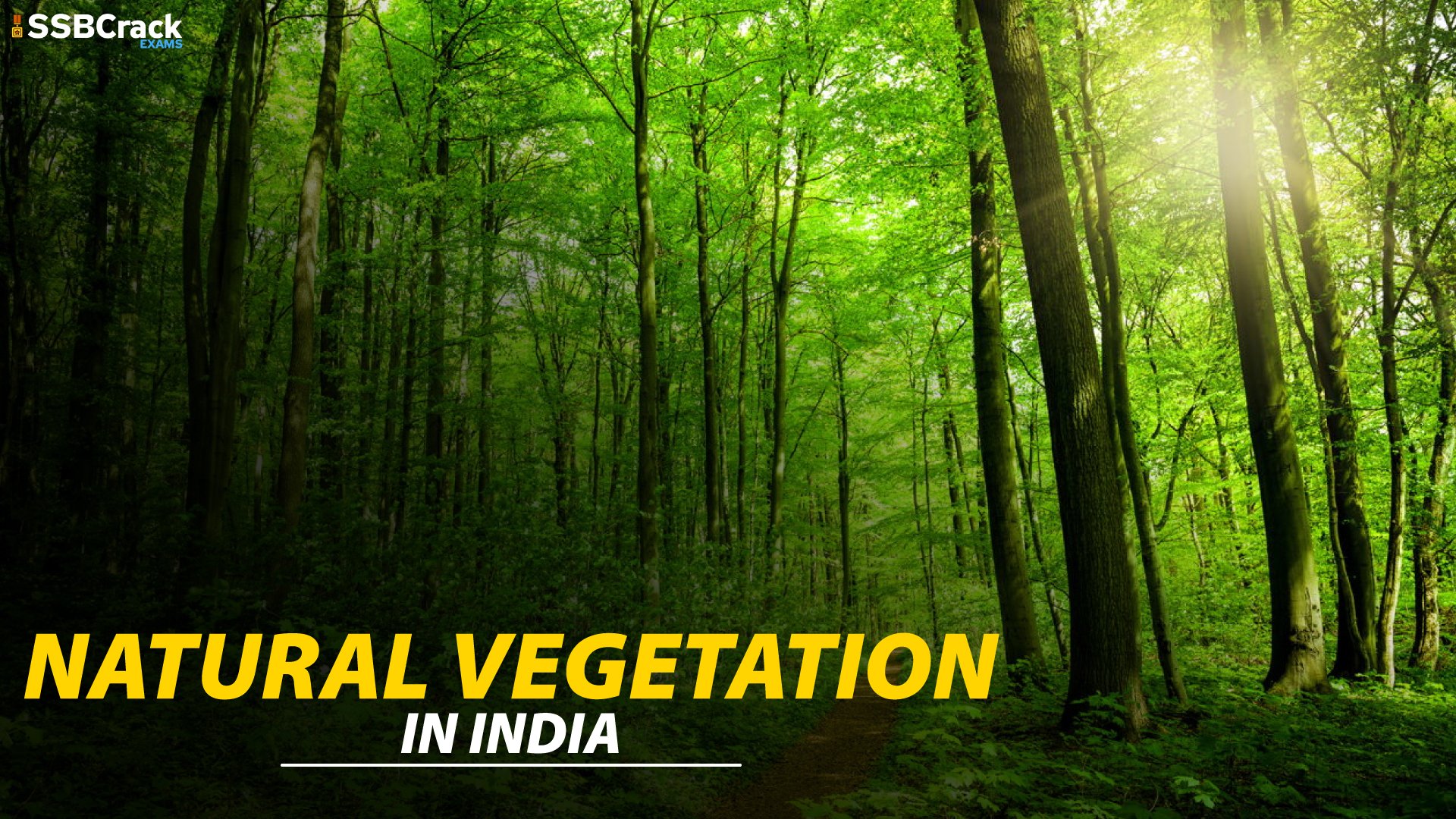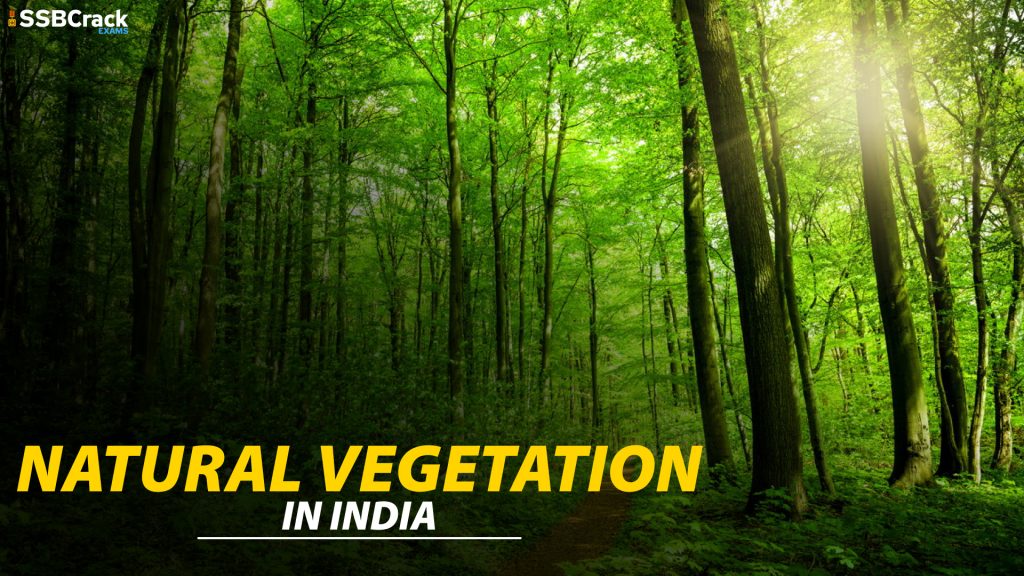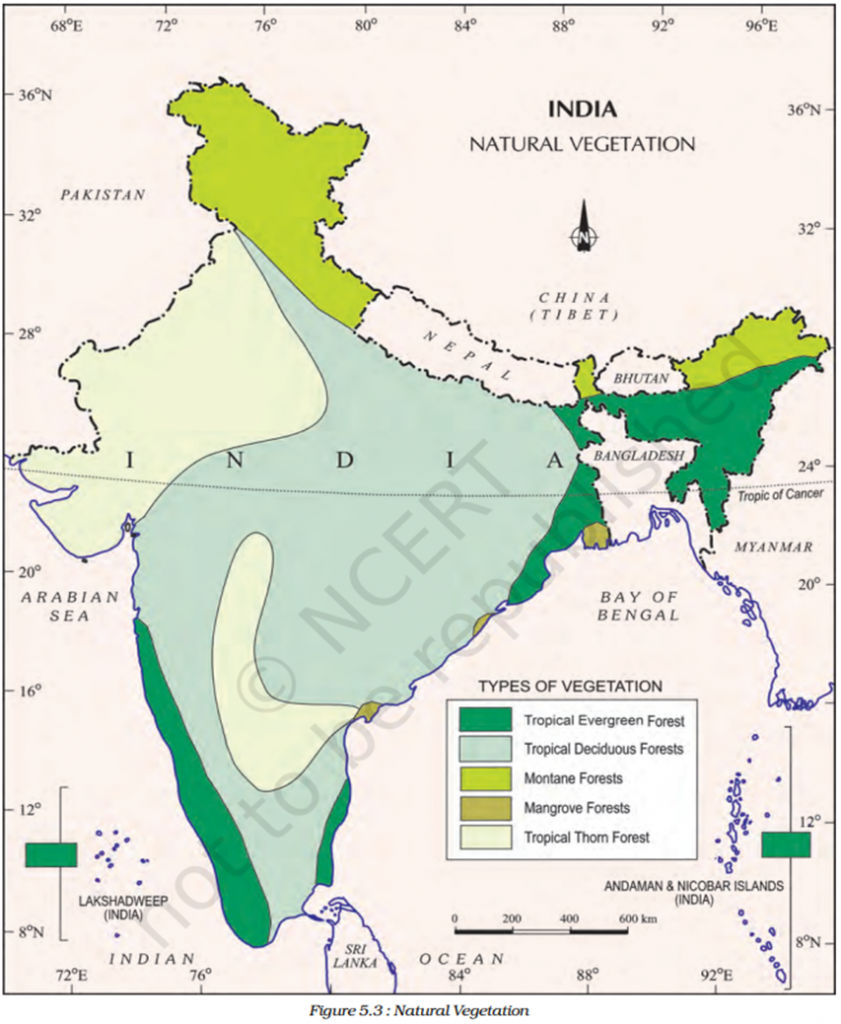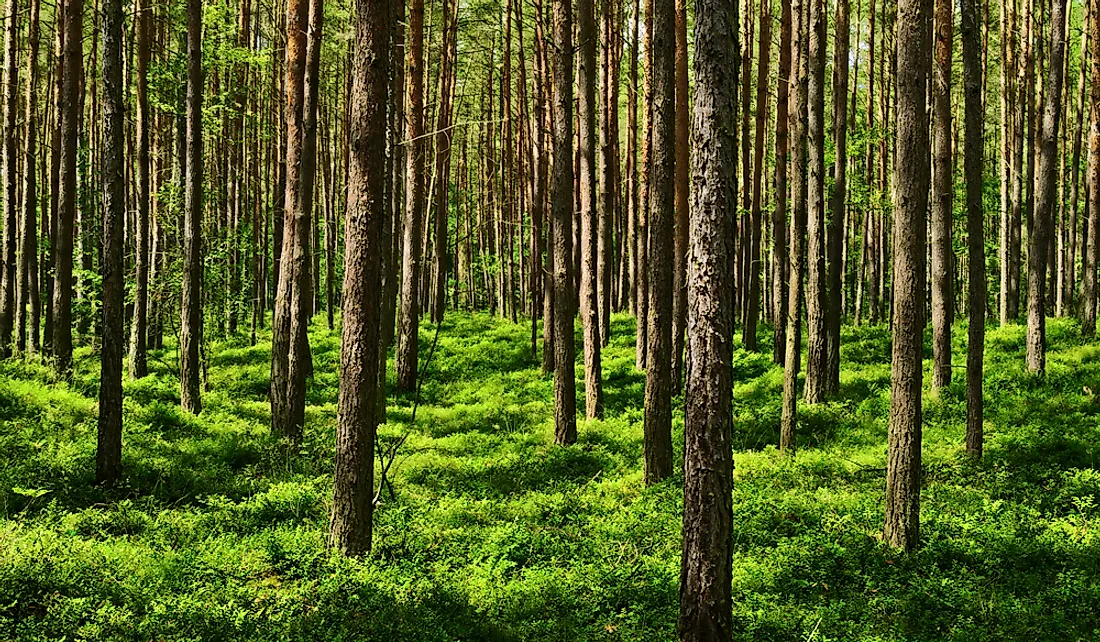Greetings, future warriors today we are going to discuss the Natural Vegetation of India, which comes under the geography section of the exams and is amongst the most frequently asked. The roots to study the diverse geography of our nation starts from here. This is also from an interview point of view, as IO expects you to know at least the basic geography of your own nation.
The topics we are going to cover are:
- Definition of Natural Vegetation
- Factors affecting Natural Vegetation
- Facts about Natural Vegetation
- Types of Natural Vegetation in India(with map)
- Tropical Evergreen Forests
- Tropical Deciduous Forests
- Tropical Thorn Forests
- Montane Forests
- Mangrove Forests
- Biosphere Reserves of India(with map)
Definition of Natural Vegetation
- Natural Vegetation refers to a plant community which has grown naturally without human aid and has been left undisturbed for a long time. It is also referred to as Virgin Vegetation.
- Thus, cultivated crops and fruits, orchards form part of the vegetation but not natural vegetation.
Factors Affecting Natural Vegetation
- Land: Fertile lands generally are much more used for agriculture as compared to a rough terrain where woodlands develop
- Soil: Different type of soils cater to different type of vegetation. Sandy soils of desert support thorny bushes while wet marshy deltaic coils support mangroves and deltaic vegetation. The hill slopes with some depth of soil have conical trees.
- Temperature: Fall in temperature due to height like in Himalayas changes the vegetation from tropical to subtropical climate and alpine vegetation
- Sunlight: As is known, more the sunlight higher the growth of trees. Due to sunlight being an important part of photosynthesis
- Precipitation: Areas of heavy rainfall tend to have denser vegetation as compared to areas with less rainfall
Facts About Natural Vegetation:
- Home to 47000 plant species, India occupies 10th place accounting for 11% of total plant species in the world, with 28% of them being endemic to India.
- India has 6% of world’s total flowering plants amounting to 15000 approx.
Types of Natural Vegetation in India
Classification of Natural Vegetation in India is primarily based on the amount of rainfall received. Temperature, soil, and topography are also considered.
India’s vegetation is divided into the following 5 main categories:
- Tropical Evergreen Forests
- Tropical Deciduous Forests
- Tropical Thorn Forests
- Montane Forests
- Mangrove Forests
Tropical Evergreen Forest
- Heavy Rainfall areas of Western Ghats and the island groups of Andaman and Nicobar, upper parts of Assam and Tamil Nadu coast.
- The tropical evergreen forests usually occur in areas receiving more than 200 cm of rainfall and having a temperature of 15 to 30 degrees Celsius.
- Trees reach great heights up to 60 metres or even above.
- It has a luxuriant vegetation of all kinds – trees, shrubs, and creepers giving it a multi-layered structure.
Note:
- They occupy about seven per cent of the earth’s land surface and harbours more than half of the world’s plants and animals.
- They are found mostly near the equator.
- Region is warm and wet throughout the year.
Tropical Deciduous Forests:
- Also called the monsoon forests and spread over the region receiving rainfall between 200 cm and 70 cm.
- They are the most widespread forests of India.
- Trees of this forest type shed their leaves for about six to eight weeks in dry summer.
- On the basis of the availability of water, these forests are further divided into moist and dry deciduous.
- Moist Deciduous Forests
- Found in areas receiving rainfall between 200 and 100 cm.
- Found mostly in north-eastern states, along the foothills of Himalayas, Jharkhand, West Orissa and Chhattisgarh, and on the eastern slopes of the Western Ghats.
- Teak is the most dominant species of this forest. Other commercially important species include bamboos, mulberry, sal, shisham, sandalwood, khair, kusum and arjun.
- Dry Deciduous Forests
- Found in areas reciving rainfall between 100 cm and 70 cm.
- Found in rainier parts of the peninsular plateau and plains of Bihar and Uttar Pradesh.
- Consist of open stretches in which Teak, Sal, Peepal, Neem grow.
- Large part of the region has been cleared for cultivation and some parts are used for graxing.
Tropical Thorn Forests and Scrubs
- Found in region with rainfall less than 70 cm.
- Consist of thorny trees and bushes.
- Found in north-western part of the country including semi-arid areas of Gujarat, Rajasthan, Madhya Pradesh, Chhattisgarh, Uttar Pradesh and Haryana.
- The trees of the thorny bushes have long roots which penetrate deep into the soil in search of water.
- Leaves are thick and small to minimise evaporation
- Stems are succulent(containing a lot of juice/water) to conserve water.
Montane Forests
- At higher elevations, the climate is harsher, with lower temperatures and higher winds, preventing the growth of trees and causing the plant community to transition to montane grasslands, shrublands or alpine tundra.
- The three sub-categories of Montane Forests are:
- Wet Temperate Forests
- Found between 1000 and 2000 metres.
- Evergreen broad-leaf trees such as oaks and chestnuts predominate
- The mean annual rainfall here is 150 cm to 300 cm, the mean annual temperature is about 11°C to 14°C and the average relative humidity is over 80 per cent.
- Found in the higher hilly areas of Kerala and Tamil Nadu, Assam, West Bengal, Sikkim, Arunachal Pradesh and Nagaland.
- Chilauni, Indian chestnut, Deodar, Machilus, Cinnamomum, Litsea, Plum, Blue pine, Birch, Oak, Hemlock, etc. are important species
- Temperate Forests
- At a height of 1500-3000
- The overall length of mountain ranges in Kashmir, Uttaranchal, Himachal Pradesh Sikkim and Darjeeling are covered by Himalayan temperate forests.
- The annual rainfall varies from 150 cm to 250 cm. Fine wood is provided by them which is of great use for timber, construction and sleepers of railways.
- Oaks, laurels, rhododendrons and some kinds of bamboos are also found in these forests.
- Alpine Forests
- Located at a height of more than 3600 m.
- Alpine forests are characterised by silver fir, junipers, pines and birches trees.
- The south-west monsoon here is very feeble and the rainfall is below 100 cm, mostly snow.
- Lichens and mosses are found in the natural vegetation at higher altitudes.
Note:
The trees of alpine vegetation ultimately get stunted as they approach winters(snow-time) and merge through shrubs and scrubs into the Alpine Grasslands, which are used extensively by nomadic tribes like Gujjars, and the Bakarwals.
Mangrove Forests
- Found in deltas of the Ganga, the Mahanadi, the Krishna, the Godavari and the Kaveri.
- In the Ganga Brahmaputra delta, sundari trees are found.
Now some common and important features of all Mangrove features around the globe are
- It is in the tropical and subtropical tidal areas, Mangrove forests are commonly found.
- Mangroves occur in areas such as estuaries and marine shorelines.
- They contain a complex root system and complex salt filtration system for coping up with the saltwater immersion.
- The ability to adapt to low oxygen conditions of waterlogged mud is a feature of Mangrove forests.
- Mangrove forests can be found in the saltwater coastal areas of 118 tropical and subtropical countries, which is more than 137,000 square kilometres.
- They have the ability to improve water quality by purifying pollutants and trapping sediments from the land.
- Mangroves can reduce coastal erosion.
- Mangrove forests are characterized by a humid climate, saline environment, and waterlogged soil.
- Special characteristics of mangrove forests include adaptation to low levels of oxygen, uptaking nutrients from the atmosphere, limiting salt intake, increasing survival of offspring and limiting water loss.
- Mangrove forests play an important role in the maintenance of marine ecosystem structure.
- Around 3 % of the earth’s total mangrove vegetation is in India.
- Mangroves are in diverse sizes from shrubs to tall trees. The mangrove plant has a height of 5-25 meters but mainly depends on the age and regional location.
- Note: Asia has the largest share (42%) of the world’s mangroves. In terms of diversity of flora, a total of 46 true mangrove species belonging to fourteen families are found in Indian mangrove habitats. Large-leafed mangroves known as the oriental mangroves are one of the most common true mangrove plant species.
Biosphere Reserves
Governments of India have created Biosphere Reserves which are areas of land or water that are protected by law in order to support the conservation of ecosystems, as well as the sustainability of mankind’s impact on the environment. We look at some of the most important biosphere reserves of India through the following map
Conclusion:
This is an important topic from a student’s point of view because it also holds value for self, knowing about one’s own nation. For more topics like these related to defence exams, you can go to the study material section of our website SSBCrackExams.
Also Read:
- Project Elephant And Elephant Reserves In India
- Types Of Wind – UPSC CDS NDA Geography Notes
- Classification Of Soil In India – Types Of Soil In India
- List Of Geographical Indications [GI Tags] In India
- List Of Biosphere Reserves In India
- List Of National Parks In India
- List Of Dams In India [Highest, Longest, Largest, Oldest & State-Wise List]
- List Of Tiger Reserves In India








/171748805-56a0067a5f9b58eba4ae8baa.jpg)



















